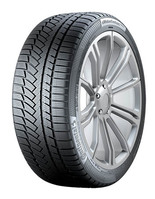Free winter tyre tests at Mercedes-Benz World

As partner in excellence at Mercedes-Benz World, Continental Tyres is offering motorists the chance to experience the difference in performance between summer and winter tyres, with free tests during half term at Mercedes-Benz World, Weybridge.
The pioneering brand experience centre opened in 2006, offering an interactive world full of Mercedes-Benz passion, heritage, values and innovation. Tyres from Continental ensure optimum performance to give dynamism and precision handling with the highest safety reserves throughout every driving experience. Continental is well placed to serve the many and varied demands of the entire Mercedes-Benz, whilst also demonstrating the difference between summer and winter tyres.
Following in the footsteps of Torvill & Dean who conducted similar tests in January, drivers will get the chance to experience two cars through a slalom on a simulated icy track. One fitted with Continental summer tyres and the other with Continental winter tyres, providing first-hand experience with the notable difference in stopping distance.
UK drivers are six times more likely to have an accident during the winter months, with the numbers rising further when snow and ice add an extra hazard. However, many motorists are unprepared for wintry conditions when driving, and many are unaware that they can improve safety by doing something as simple as switching to winter tyres.
There remains a huge lack of awareness in the UK about winter tyres. Some research conducted by Continental identified that nearly half (47 per cent) of motorists are unaware that winter tyres even exist.
Either motorists are not aware they exist or they think that the tyre can only be used during times of heavy snow or ice. In fact, winter tyres can be used on slush, ice, frost and even wet roads.
Any time the temperature dips below +7 degrees centigrade you’re better off on winter tyres. This is because unlike summer tyres (everyday tyres), winter tyres do not harden at lower temperatures. That means they give you a much better grip on the road and the ability to stop in a shorter distance, increasing your safety whilst driving.
A vehicle fitted with winter tyres will come to standstill on a snow-covered road (from a speed of just 30mph) after 35 metres – with normal tyres the braking distance required is a further 8 metres (43 metres). That is another two car lengths.
Data from the Department of Transport found that the percentage of UK car accidents caused by skidding is 48 per cent in the winter, compared to just 11 per cent in dry conditions.
The tests are being offered for free between Monday 27th October and Sunday 2nd November. There is no need to book in advance, just turn up on the day.
Driving in winter hints and tips
Before you set off:
Check tyres for wear often and replace if necessary. The legal limit for tread depth on tyres is 1.6mm, but safety experts at Continental Tyres recommend a minimum of 3mm for wet weather safety. Ensuring tyres are correctly inflated will also improve your cars handling as well as saving you money.
Plan ahead and allow enough time to get to your destination.
Ensure you have the correct tyre pressure and tread depth
Book your car in for a winter service and keep up maintenance
Use antifreeze in the radiator of your car and in your windscreen wash
Keep windscreens and mirrors clean to avoid glare of a low winter sun
Keep your battery fully charged and replace if it becomes unreliable
Keep lights clean and check bulbs regularly
Carry a ContiComfortKit which will keep you moving if you have a puncture
Put together an emergency kit, such as food, drink, torch and extra clothing, for journeys in severe winter weather, and keep it in the back of your car
On the road:
Visibility is vital. Keep your windscreen and windows clear
Reduce your speed on slippery surfaces and avoid harsh braking or acceleration
At low speeds use second rather than first gear to avoid spinning the wheels
To slow the car change down and use engine braking but if you need to use the brakes apply them gently
Increase the distance between you and the vehicle in front – in rain, ice and snow leave enough space to stop safely
Allow up to ten times the normal braking distance, especially on motorways
Use a higher gear to avoid spinning the wheels when starting off or climbing hills
In a diesel car you can often climb slippery slopes or hills by putting the car into 2nd gear, engaging the clutch slowly and let the engine run at idling speed-the car will climb slowly without the use of the accelerator
Continental produces winter tyres in 200 sizes and is the leading supplier of winter tyres in Europe.




